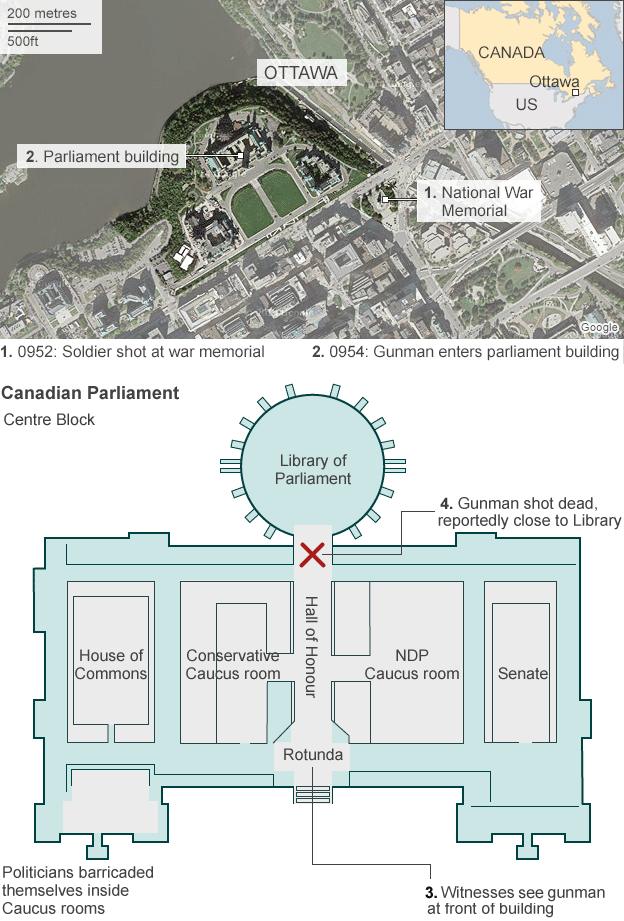Can Canada preserve its openness?
- Published
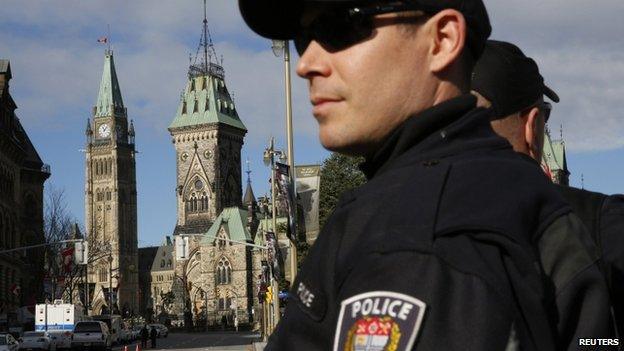
A gunman's rampage through the Canadian parliament has focused attention on how the country protects its institutions. Will the attacks affect its cherished openness?
Ottawa's lockdown may have been over by the time the sun rose over the Canadian capital, but lines of yellow police tape still stretched across the road in front of Parliament Hill as armed officers stood guard.
Over the street, rows of squad cars blocked the National War Memorial, where a gunman shot and killed a soldier before rampaging through the parliament building.
By the standards of most Western cities, these security measures appeared restrained in the wake of a deadly attack.
But in a nation where the openness of political institutions is a deeply-cherished article of faith, they were a sign that something was out of the ordinary.
Normally, security around Parliament Hill is far from draconian.
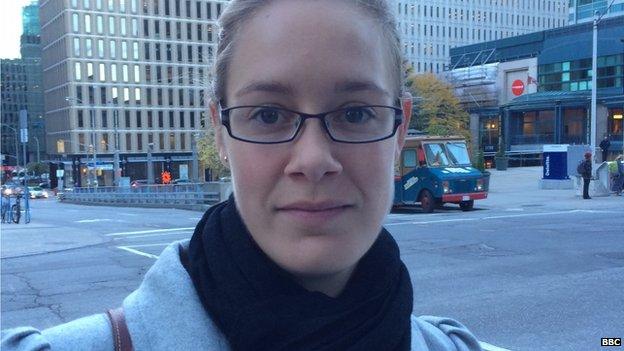
Lucy Chislett is proud of the openness of Canada's public institutions
Most days the public are free to walk across the lawn that stretches in front of the Centre Block. On sunny days visitors play ball games or relax on the grass. In the summer months there are lunchtime yoga classes.
Political protesters, too, commonly gather on the green.
"I've always been very proud and think it's absolutely amazing that you can walk up and kind of feel democracy when you go up to our parliament buildings," says lawyer Lucy Chislett, 26, who works nearby.
"I hope that doesn't change."
Getting into Centre Block - the complex's main building - requires a pass.
Visitors wait in line to go through airport-style security scanning. Public parking is not permitted, but members of the public can wander through car parks that surround the building.
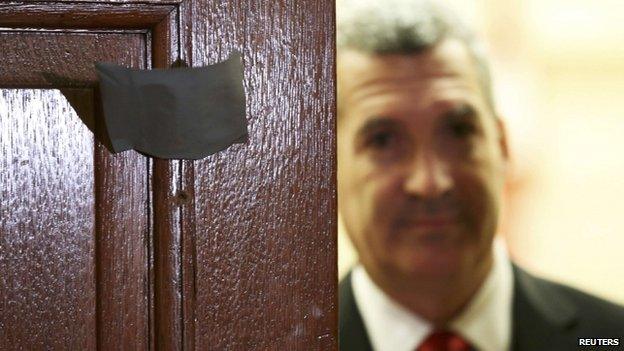
Bullet holes could be seen in parliament buildings following the attack
Security at the site is the responsibility of Sergeant-at-Arms Kevin Vickers, a former Royal Canadian Mounted Police (RCMP) officer who has been hailed for his heroism after witnesses identified him as the man who shot the attacker.
Those protecting the complex and its occupants include officers from the RCMP Parliament Hill Detachment, the House of Commons Security Services and the Senate Protective Service.
The service personnel who stand guard at the National War Memorial - as Cpl Nathan Cirillo was doing before he was fatally shot - carry unloaded rifles.

How did the gunman get in?
It's not yet clear how the gunman got past security at Centre Block. According to CBC, external, witness Scott Walsh reported seeing a man running with a double-barrelled shotgun jumped over the stone wall that surrounds Parliament Hill.
According to Walsh, the gunman then forced a driver from their car at gunpoint before driving to Parliament's front door and firing at least two shots.
In 2012 a report by the auditor-general's office warned that there were flaws in the complex's security that needed to be addressed.
These included potential confusion arising from having four different police forces (the RCMP, Senate Protective Service, House of Commons Security Services plus the Ottawa police, which patrols streets nearby) in charge.

For many Canadians, the contrast with the security around politicians and key buildings in the United States is a point of pride.
"Canadian prime ministers don't run around surrounded by men in black suits - they've always tried to present themselves as close to the people," says Prof Christian Leuprecht, a security expert at the Royal Military College of Canada.
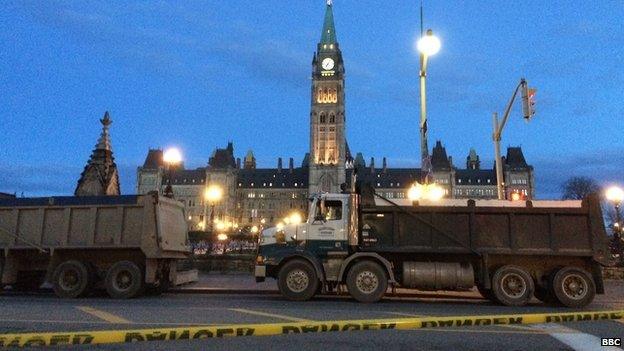
"Parliament has always been fairly open access."
Indeed, there appeared to be little appetite on Ottawa's streets for tightening security around Canada's democratic institutions.
"It might seem a little bit less inviting starting today, but I don't think that'll last very long," says policy analyst Peter Nasr, 35, who works close to Parliament Hill, as he looked across the police tape.
"We don't want to make this sort of thing feel normal."
Wednesday morning's shootings will undoubtedly lead the authorities to examine their procedures.
It's not the first time the site has been a target.

People paid their respects at the scene of the shooting in Ottawa
In 1966, Paul Joseph Chartier, who was armed with 10 sticks of dynamite accidentally blew himself up in Centre Block .
The buildings were evacuated in 1989 when a hijacker fired at American tourists from a coach nearby.
A man drove a Jeep up Centre Block's steps in 1997, stopping just before he crashed into the doors.
In 2006, police foiled the so-called "Toronto 18" plot to launch a suicide attack on the hill.
There's nothing the authorities can do, Leuprecht says, to prevent parliament buildings becoming a target for violent extremists.
He says the handling of Wednesday's events will be judged effective by security agencies. Security measures at Parliament Hill had previously been tightened in the wake of the 11 September attacks, he says.

"The response was very effective," he says. No-one else was killed after the first shooting and the building's elected officials were protected, Leuprecht adds.
Following the attacks, Mr Harper pledged "to strengthen our resolve and redouble our efforts and those of our national security agencies". But he also insisted that "Canada will never be intimidated".
There was a sense on the streets of Ottawa, too, that surrendering the city's cherished openness would be to hand victory to those who sought to undermine the nation's democratic foundations.
"It's a tragedy, but I hope that we come together and react in a way that's not going to allow these people to win and further restrict liberties and everything that we stand for," says Chislett.
"Even though people are fearful, I hope this doesn't change what we stand for and all the values that we still hold."
